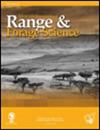A laissez-faire management approach in a grassland landscape results in a fine-scale, spatio-temporally heterogeneous fire pattern
IF 1.9
4区 环境科学与生态学
Q3 ECOLOGY
引用次数: 1
Abstract
What are the spatio-temporal characteristics of a fire pattern that is allowed to develop over time across a species- rich, predominantly grassy landscape? More than 1 300 fires were documented over 13 years in the 48 000 ha Songimvelo Game Reserve in the Barberton Mountainland, South Africa. Most fires were set by pastoralists and were uncontrolled. Lightning fires and prescribed burns made up <2% and <8% respectively of the total area burnt. Median and mean burn areas in the 31 700 ha game-fenced section were 35 and 187 ha respectively with a fire return period of 2.9 years. In the less-grazed 14 000 ha section that receives a higher annual rainfall, median and mean fire sizes were 124 and 501 ha and the return period was 1.5 years. These fire return periods are in line with generally accepted management prescriptions for grasslands. The annual number of fires, individual patches and different fire histories occurring in a moving window across the landscape were consistently higher, compared with those resulting from a small-scale or large-scale fixed fire regime. This laissez-faire approach thus resulted in a fine-scale, dynamic fire pattern with high landscape indices that could be conducive to maintaining biodiversity.在草地景观中,自由放任的管理方式导致了精细尺度、时空异质性的火灾格局
在一个物种丰富、以草为主的景观中,随着时间的推移,火灾模式的时空特征是什么?在南非巴伯顿山区4.8万公顷的Songimvelo野生动物保护区,13年来记录了1300多起火灾。大多数火灾是由牧民放火,而且没有得到控制。闪电火灾和规定烧伤分别占总烧伤面积的<2%和<8%。3.17万公顷围篱区的中位和平均燃烧面积分别为35公顷和187公顷,复火期为2.9年。在年降雨量较大、放牧较少的14000公顷区域,火灾规模的中位数和平均值分别为124和501公顷,重现期为1.5年。这些回火期符合普遍接受的草原管理处方。与小规模或大规模固定火灾制度相比,在整个景观的移动窗口中发生的火灾、单个斑块和不同火灾历史的年数量始终更高。这种自由放任的方法导致了高景观指数的精细尺度动态火灾模式,有利于维持生物多样性。
本文章由计算机程序翻译,如有差异,请以英文原文为准。
求助全文
约1分钟内获得全文
求助全文
来源期刊

African Journal of Range & Forage Science
ECOLOGY-ENVIRONMENTAL SCIENCES
CiteScore
4.00
自引率
14.30%
发文量
35
审稿时长
>12 weeks
期刊介绍:
The African Journal of Range & Forage Science is the leading rangeland and pastoral journal in Africa. The Journal is dedicated to publishing quality original material that advances rangeland ecology and pasture management. The journal aims to publish research of international importance from any region, but as an African journal, we are particularly interested in research from Africa and relevant to the continent. The Journal promotes both science and its application and authors are encouraged to explicitly identify the practical implications of their work. Peer-reviewed research papers and research notes deal primarily with all aspects of rangeland and pasture ecology and management, including the ecophysiology and biogeochemistry of rangelands and pastures, terrestrial plant–herbivore interactions (both domestic and wild), rangeland assessment and monitoring, effects of climate change on rangelands, rangeland and pasture management, rangeland rehabilitation, ecosystem services in support of production, conservation and biodiversity goals, and the identification and development of intensive and semi-intensive pasture and forage resources to meet livestock production needs. Articles highlighting transdisciplinary linkages among biophysical and social sciences that support management, policy and societal values are particularly encouraged. The Journal includes relevant book reviews and invited perspectives that contribute to the development of range and forage science. Letters to the editor that debate issues raised in the Journal are acceptable. The African Journal of Range & Forage Science is the official journal of the Grassland Society of Southern Africa.
 求助内容:
求助内容: 应助结果提醒方式:
应助结果提醒方式:


